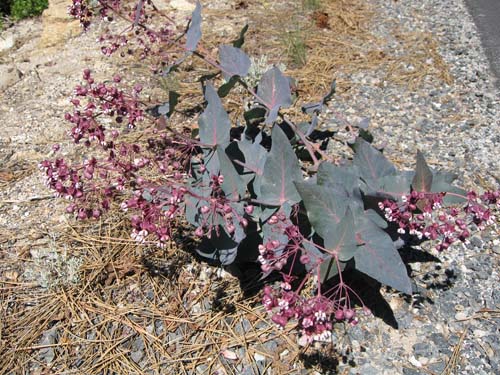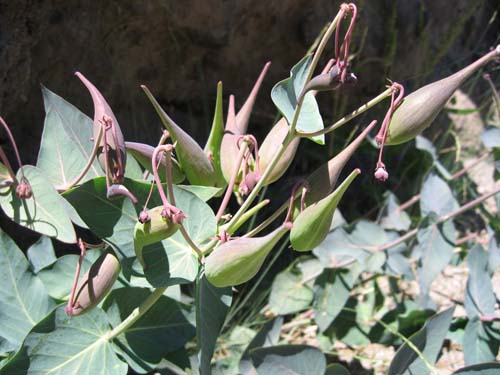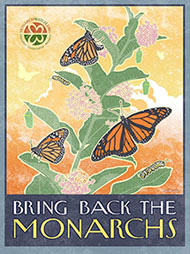Asclepias cordifolia, (Heartleaf Milkweed)
General Description
The common name for this species is derived from its Latin name cordifolia which means heart shaped. Mainly a California species, it is found primarily in the Northern part of the state. It will bloom in its second year. Results vary, but you can get it to bloom in its first year if you trim it.
Native Americans used the fibers of this plant to make ropes and nets including a 40 foot long deer net discovered by anthropologists that required an estimated 35,000 plant stalks to create.
Form/Growth
Distribution: CA, NV, OR
Flower: Color is dark red to purple. Corolla color is darker than the hood color. Corollas fold back below the hoods. No horns. Umbel stands erect with 10 +/- flowers per umbel. Several flower clusters branch off the top of the main stem.
Foliage: Glabrous. Stem is ascending. Leaf arrangement is opposite and attachment is sessile.
Habitat: Woodland, coniferous forests, but most commonly found on rocky slopes.
Height: 1- 4 ft (0.3- 1.2 m).
Leaves: Clasping, large heart-shaped, or lance-shaped leaves, bluish green with a purplish tinge. 4-7 in (10- 18 cm) long.
Roots: Taproot
Toxicity: Low.
Reproductive
Blossoming Season: Will produce flowers in its second year during June – August.
Life span: NA
Propagation: By seed.
Pods: Large, usually erect, oblong, narrow to a point. Light-green color, compared to leaves, with a purplish tinge. 3-5 in (7 ½ – 13 cm) long.
Seed Color: Brown.
Environment and Growth Requirements
Maintenance: Low.
Overhead Conditions: Full sun to partial shade.
Precipitation: 8-40 in (20-102 cm) annually.
Soil Texture: Course to medium. Grows well in rocky soil.
Temperature: Can tolerate a minimum temperature of -10 to 0 Fahrenheit (-23 to -18 Celsius).



Work Cited: gardenguides.com, calflora.org
Photos: Bobby Gendron




